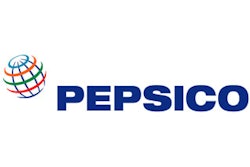Food and beverage manufacturers and distributors rely on maintaining environmental control and minimizing the time product spends on the loading dock to survive in extremely competitive markets. These operations often run multiple shifts with tremendously high loading cycles. Having a system that improves visibility to the operations and logistics and, in turn, diminishes increased concerns about foodborne illnesses, allergens and contamination is essential.
Now that the focus on food safety is more about prevention than reaction, supply chain managers need to look carefully at the products they utilize everyday for their loading dock operations. One of the best ways facilities can prevent food-related contamination is to limit the amount of time products spend in transit and on the dock by utilizing a yard and dock management system.
This technology is designed to eliminate common and most often costly logistics problems. It uses real-time and physical data to help facilities efficiently manage operations such as loading dock visibility, live and staged trailer coordination, and turn time management. The system integrates loading dock equipment with intelligent software to monitor, communicate and manage loading dock status, helping companies avoid costly detention charges and product spoilage.
A yard and dock management system provides facilities with increased visibility and productivity in their yard, loading dock and warehouse. Whether you need just a yard management system to provide real-time data using RFID and GPS tracking a dock management system to increase loading dock efficiency, or a fully integrated system combining both, a tailored yard and dock management system can give you the tools to make the most of your operations.
This easy-to-implement yard and dock management system acts as an extra set of eyes which allows you to keep more accurate track of your facility’s operations to save time and money and prevent spoilage or product loss.
Start Beyond the Dock
The yard is a dynamic and continuously changing environment that requires tremendous oversight of trailer movements and other time-sensitive tasks when it comes to moving perishables from place to place. A yard management system effectively and efficiently processes inbound trailers when they enter the yard to optimize movements and prevent lost loads. It also helps monitor and improve yard truck efficiency to increase trailer turn time, accuracy and prevent spoilage.
Many systems utilize RFID and various sensor technologies as well as GPS tracking so every trailer movement is recorded. This increased visibility and monitoring creates real-time performance reports, with the ability to reduce yard check time by 90 percent and reduce yard labor and equipment resources by up to 30 percent in many cases — percentages that can reduce some of the headaches and costs associated with knowing where every trailer is and where it needs to be.
A yard and dock management system provides a better option for managing third party drivers, too. A single interface captures dock status and allows you to schedule appointments and send automatic notifications to carriers when a position is ready via a variety of paging devices that are given to drivers to make trailer movements timely and efficient. In addition, you can track and facilitate priority movements of trailers to shipping or receiving doors based on equipment requirements, loading or unloading schedules or product type.
Run the Dock at Full Potential
Increasing your yard efficiency is just the beginning of the information and cost reduction potential that a yard and dock management system can bring to your operation. With real-time information and value-added capabilities, this technology can keep your dock running at optimal efficiency by collecting critical equipment analytics. Now you can see your entire loading dock, discover areas to increase efficiency and ensure product is moved as quickly and effectively as possible.
Receiving real-time loading dock status updates from a single interface can help reduce labor hours while increasing dock utilization by 20 percent or more. And in response to the increased productivity, some systems can even eliminate unnecessary service which can tie up dock positions and leave trailers in the yard or at the dock for hours. Through scheduled maintenance based on actual equipment usage through a network of sensors installed in the doors, vehicle restraints and dock levelers, you can further schedule maintenance when best suited to the work load and types of products.
4SIGHT™ Yard and Dock Management System is the latest technology offering from 4Front Engineered Solutions. 4Front offers warehousing, manufacturing, retail and distribution center customers, participating in a variety of end markets, the most comprehensive line of highly engineered loading dock systems in the material handling industry.























